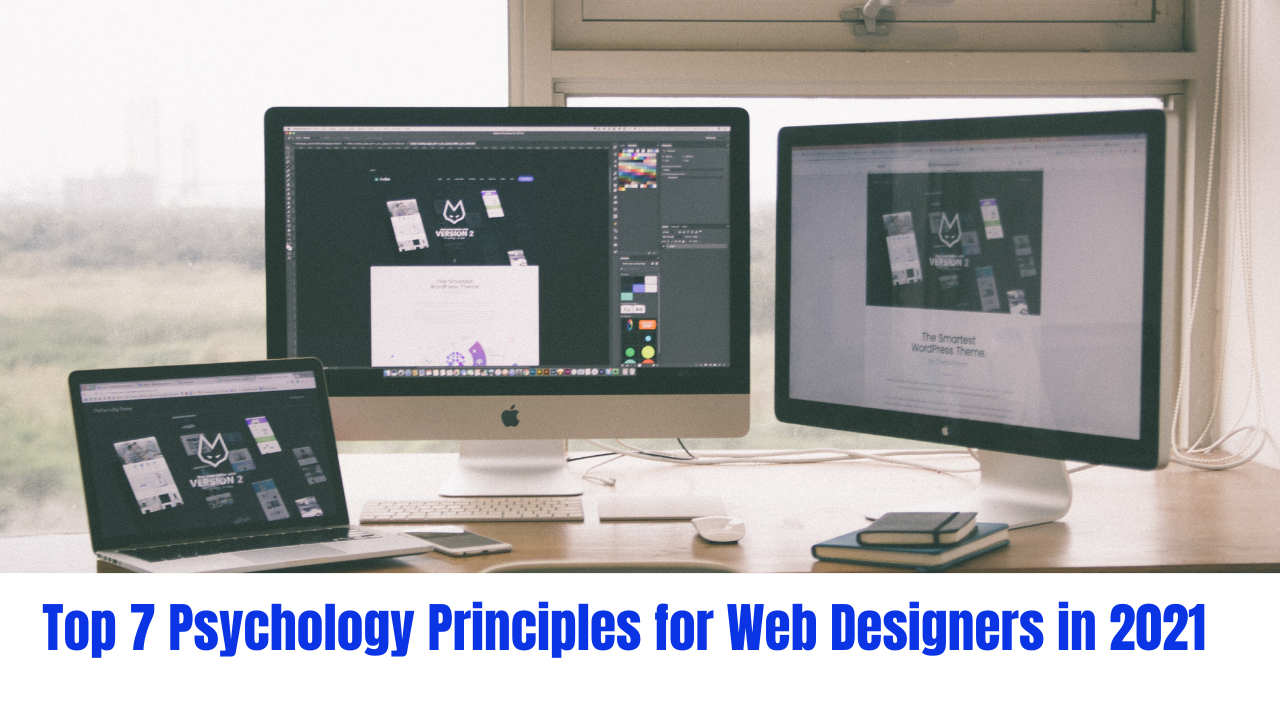A website is the hub of any online business. Web designers help in turning designs into functional websites. For professional web designers, creating designs that clients will fall in love with should not be the prime objective. We are discussing here top 7 Psychology Principles for Web Designers in 2021
YES!
The statement may seem counterintuitive, but it is whimsically essential to know that turning visitors into customers is much more than clients’ personal aesthetics. And, you are in the business of designing sites for your clients’ audiences.
Now the real challenge is getting it right. As a professional web designer, considering what the client tells at face value is imperative. However, it will only scrape the surface of who the target audience is.
User intent will help you understand the reason why visitors respond to sites the way they do. Memorizing psychology principles will help you design user journeys that get visitors to respond exactly how both you and your client want them to.
Top 10 Psychology Principles for Building Designs That Convert
The human brain functions in a certain way, and it has a huge influence on the overall structure and color of things. So, while creating any design, make sure to keep in mind the underlying thought processes and natural responses.
Let’s get down and have a look at the psychology principles for web designers to build robust sites and intuitive digital experiences for the target audience.
1. AESTHETICS-USABILITY EFFECT
According to this effect, people are highly likely to associate with attractive interfaces. Therefore, every web designer should start crafting designs with the objective of responsive, modern, and good design.
2. COLOR PSYCHOLOGY
We all know that colors have a great influence on overall human behavior. And, the colors of your designs are going to affect how the site will be perceived. You can attract and retain users by adding colors strongly tied to emotion.
3. PSYCHOLOGY OF SHAPES
Similar to colors, shapes with an interface also affect people’s perception of a brand or the content on the site. Whether square, triangle, polygons, or circles, every shape has a unique psychological influence.
4. GESTALT PRINCIPLES
Ever heard about Gestalt Principles? Well, according to the principles of Gestalt theory, humans recognize complex patterns and chaotic data by subconsciously arranging various parts into an organized system that creates a whole.
Principles associated with Gestalt theory include symmetry, proximity, similarity, continuation, closure, and figure. Therefore, web designers ought to consider principles of visual perception that users must understand at a glance what they see and find what they want.
5. JAKOB’S LAW
Have you ever witnessed that people engage with things that seem familiar to them? Well, this is known as the familiarity principle, aka Mere-Exposure Effect.
According to Jakob’s Law, online users are highly likely to interact with sites that work the same way as other sites they’ve spent their time earlier.
6. VON RESTORFF EFFECT
Imagine visiting a bike showroom. Wouldn’t a bike with stunning design, color, and performance grab your attention? Von Restorff Effect describes the same thing that things that stand out from others are more memorable. Professional web designers understand the benefit of accentuating the contrast by using different colors, shapes, positions, and textures.
7. SELECTIVE DISREGARD
Many times, we miss things that happen right in front of us. Indeed, the human brain does a wonderful job of tricking us. Selective disregard is considered as the type of blindness that visitors develop to things irrelevant to the main goal.
Conclusion
Though every web designer aims at building stand-out designs, many fail to create designs that can help turn visitors into customers. Well, there is a massive gap between web designers and professional web designers; a lot of web designers miss the core fundamentals of all design. A website design need not only be attractive, but also SEO friendly so as to enhance the site’s visibility to the best. Web designing course in Chandigarh helps trainees build designs Search Engine Friendly designs that retain and convert users.
